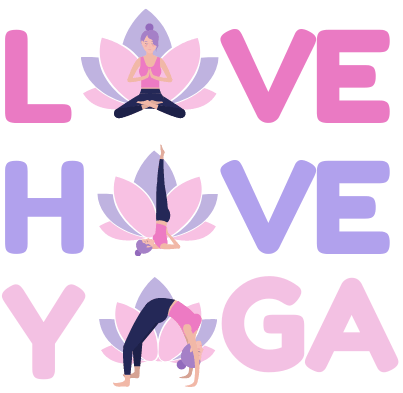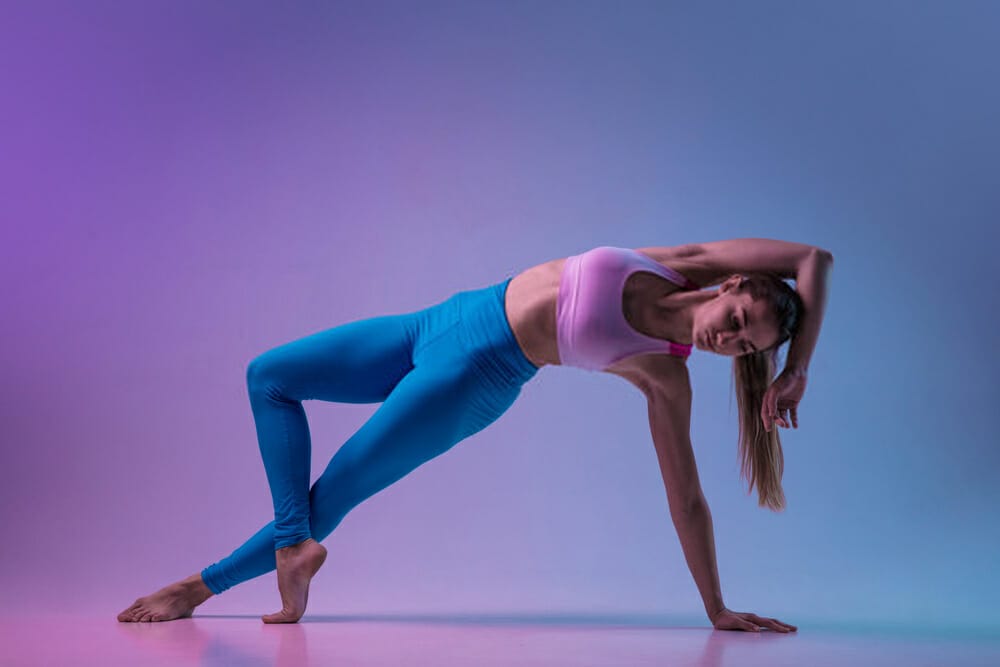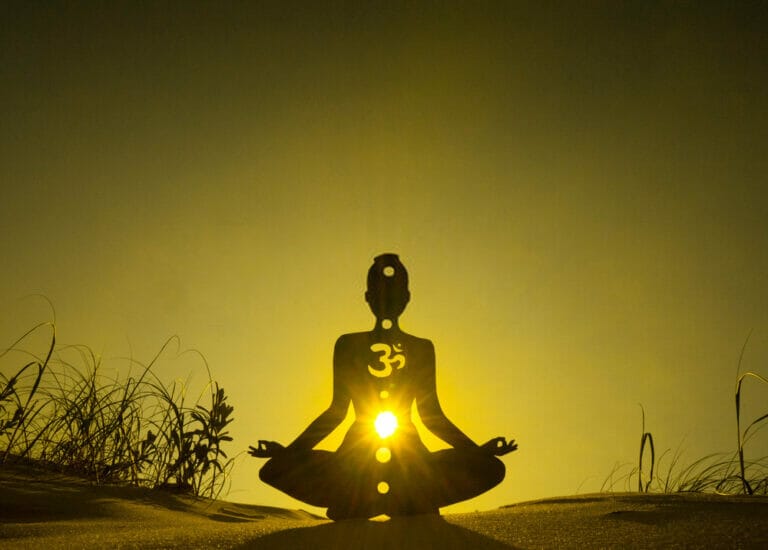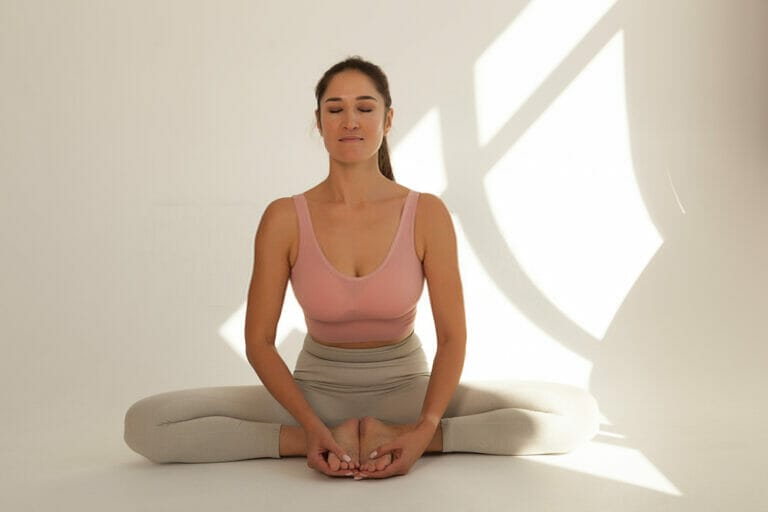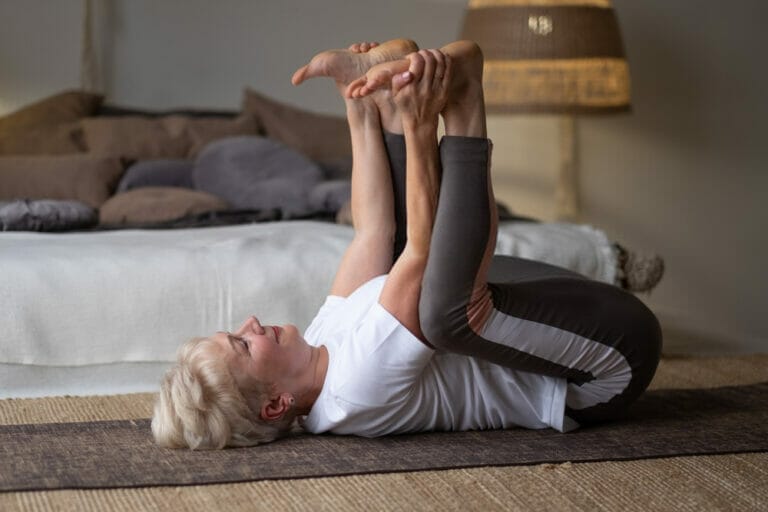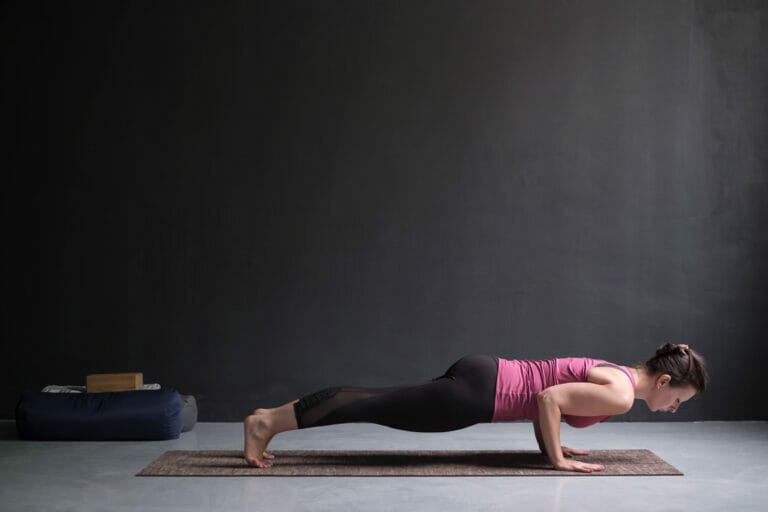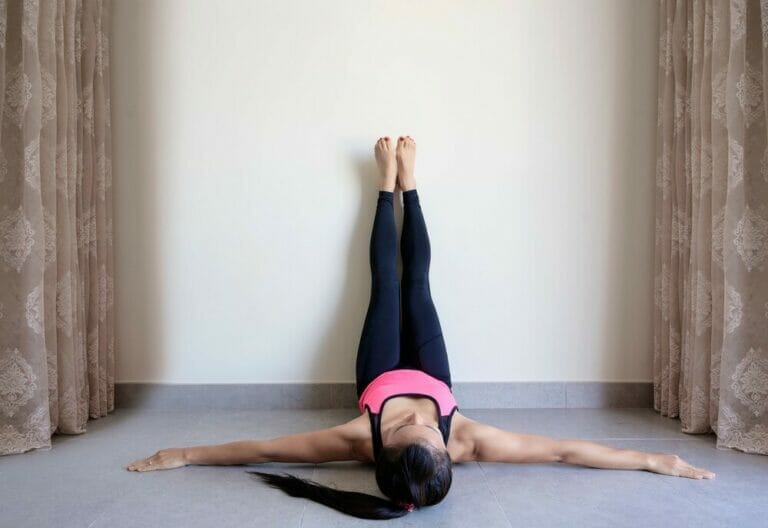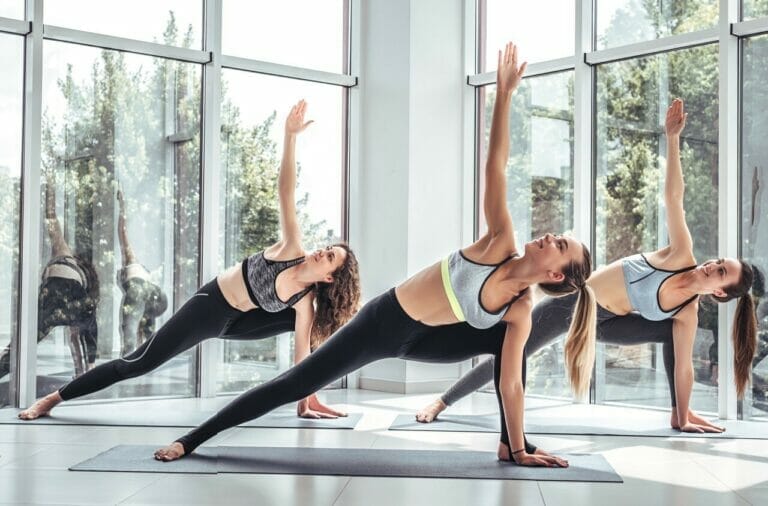Have Better Flexibility With These Yoga Poses
Many people are interested in learning how to increase their flexibility, decrease stiffness and tightness, and become stronger.
Yoga is one of the best ways to achieve these goals. Stiffness and tightness in our body are the result of muscle tension and holding on to old trauma.
Over time this tension can cause joint stiffness, lower back pain, headaches, shoulder and neck pain, and many other health problems.
The practise of yoga is a great way to release this tension and increase your overall flexibility. But, unfortunately, as we get older, flexibility decreases, as does our range of motion. It is normal, but it doesn’t have to be.
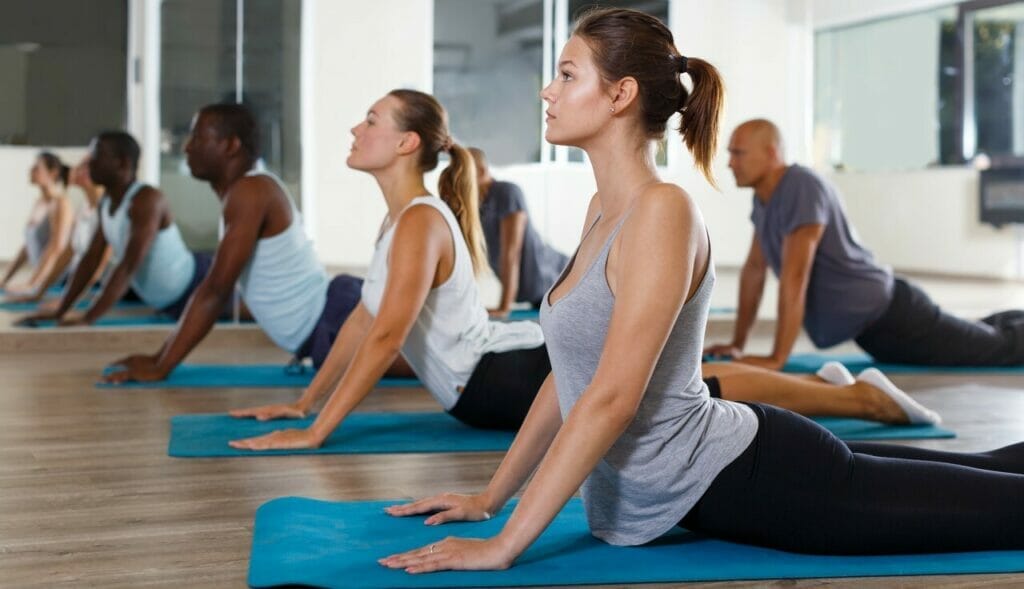
In this article, I'll discuss several simple yoga poses that you can do to increase your range of motion and flexibility.
Not only will this increase your flexibility, but it will also make you stronger and more balanced. Both of which will increase your quality of life.
Let’s get started.
WHY IS FLEXIBILITY SO IMPORTANT?
Flexibility is instrumental to physical wellness. Most people know the importance of cardio and strength training, but flexibility is often neglected until pain or an injury forces them to address it.
For example, the solution to a stiff joint is often to stretch and loosen the muscles restricting movement and placing excessive stress on the joint.
We also must mention the mental benefits of increasing your flexibility. Flexibility is augmented through stretching, and stretching feels good.
When stretching, one releases strain by releasing tension. If you release physical tension, then mental tension also releases.
It is why yoga is great for relieving stress, helping with insomnia, and giving you a stronger sense of well-being.
HOW DOES YOGA HELP IMPROVE FLEXIBILITY?
During yoga practice, you stretch slow, hold poses, and find your edge. As you hold the pose, you will feel the more profound the stretch, the more tension that begins to release. When you focus on releasing that tension, then significant muscles flexibility follows.
Yoga stretches the muscle tissue; the muscle opens up. The openings in a muscle are called fascia.
This fascia is a thin layer that runs along the length of a muscle, and with flexibility training, it becomes longer and more pliable. The result is you have more range of motion.
When you use yoga to release tension in various ways, you are decreasing stiffness. As a result, the fascia becomes more pliable, and the tissue will be looser.

It is great because when your body is more flexible, you stand a better chance of preventing injuries caused by lax muscles and bad posture.
Yoga exercises create changes deep within the muscle tissues that get them to open up. It means that if you stretch for muscle flexibility, then you are essentially extending the muscle itself rather than just loosening up muscles in its immediate vicinity.
It is essential because it means that the muscle tissue will also get more robust. It is why some studies have shown that yoga can build muscle strength in some muscles.
WHAT KINDS OF POSES ARE USEFUL IN INCREASING FLEXIBILITY?
There are many different kinds of poses in yoga that help in increasing flexibility. They are as follows:
Big Toe Pose (Padangusthasana)
It is an easy pose that you can do almost anywhere, but it does require a bit of balance. The big toe pose is excellent for increasing flexibility in your hamstrings, calves, ankles, and feet. It will also make your thighs more toned and develop your core muscles.
Eye Of The Needle Pose (Sucirandhrasana)
The eye of the needle pose is excellent for increasing flexibility in your hip flexors, core muscles, and upper body. It will also help reduce lower back pain from years of sitting all day.
Bow Pose (Dhanurasana)
The bow pose can be done in several ways, but it is best to find a slightly uncomfortable position and hold the posture as long as possible. It will help you relieve tension in your back and hip flexors.
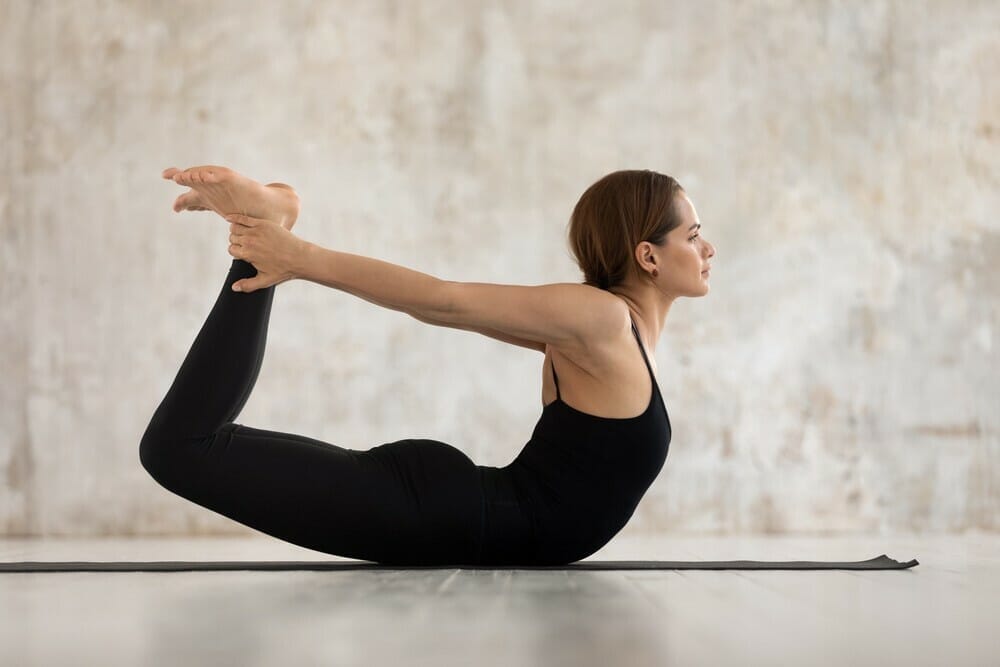
It can also help improve flexibility in your hip flexors and lower back muscles and develop abdominal muscles and release tension from your low back.
There are different variations of the bow pose that include removing into a whole twist or a downward dog pose.
Forward Fold (Paschimottanasana)
The forward fold is effortless to do, but it does require a bit of balance and strength if you want to do it properly.
This pose opens up your shoulders and chest, stretches out your hamstrings and lower back, and improves overall flexibility in the spine.
Long Stretch (Ardha Baddha Padmottanasana)
The long stretch is another excellent pose for increasing flexibility in the hamstrings, calves, and low back. The long stretch is an advanced version of the forward fold.
Twisted Pretzel Pose (Parivrtta Ardha Matsyendrasana)
The twisted pretzel pose integrates stretching motions into twists that can help to develop abdominal muscles and increase overall flexibility in your spine.
This pose is excellent for those wishing to expand their range of motion and stretch their muscle and fascia tissue. It's also a perfect way to improve your posture and relieve lower back pain.
Half Wheel Pose (Ardha Chandrasana)
The half-wheel pose is a nice twist that stretches out your lower back and opens up the grooves along the spine.
It also strengthens the core muscles, improves balance, and decreases stress. It is an excellent pose for all levels of flexibility.
Child’s Pose (Balasana)
The child’s pose is an easy, relaxing pose that focuses on stretching the spine’s muscles. It also helps you relieve pain in your low back, neck, and shoulders.
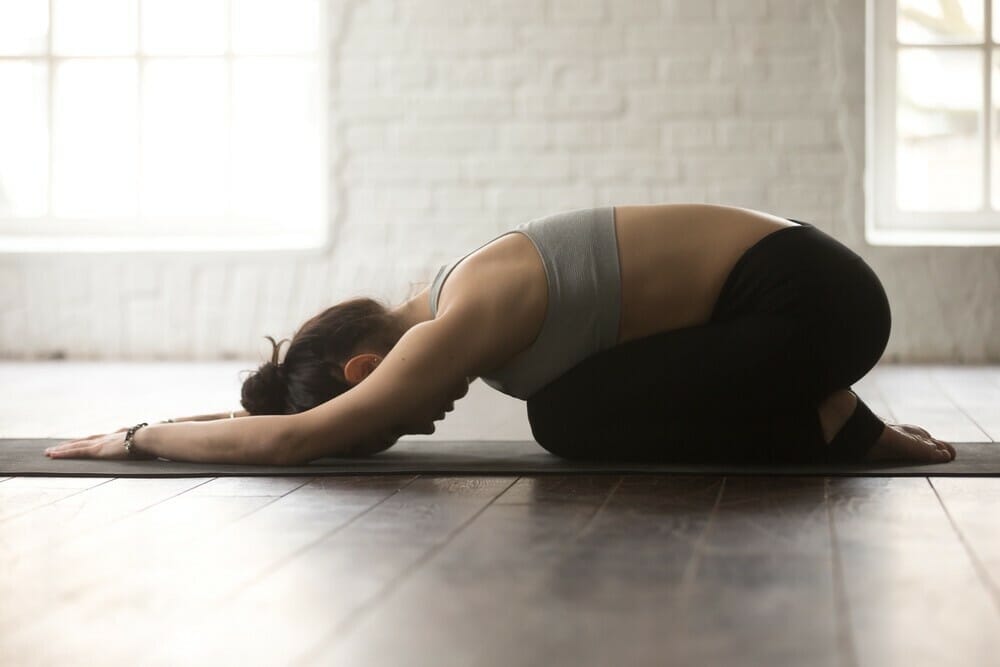
Cow Face Pose (Gomukhasana)
The cow face pose is an easy one that can be done in a few ways. This pose stretches out your neck and chest muscles and opens up your spine.
It's also great because it will strengthen your core muscles and increase flexibility in your back and neck muscles.
Crouching Cow Pose (Matsyasana)
This pose also stretches the muscles in your neck and upper back while improving their flexibility. It will also help reduce tension in your back and improve posture by improving the shape of your back.
Extended Puppy Pose (Uttanasana)
The extended puppy pose is a longer version of the child’s pose. It also helps you to stretch out your spine while strengthening your core muscles. It’s also great at reducing stress and relieving tension in your back muscles.
Half Frog Pose (Ardha Bheka Pada Paschimottanasana)
The half-frog pose is another way to stretch your spine. It also helps you to maintain the correct curve in your back and improve flexibility in your hamstrings.
King Pigeon Pose (Eka Pada Rajakapotasana)
The king pigeon pose is a great way to stretch out your hips and lower back. The chest and upper back will also benefit from this pose. This one takes a bit of balance and core strength, but it’s well worth it.
Lord of the Dance Pose (Natarajasana)
The lord of the dance pose is a great way to stretch your spine and open up your chest. This one also improves flexibility in your hamstrings, hips, and lower back.
Tree Pose (Vrksasana)
The tree pose opens up and stretches out your shoulders and the chest while strengthening your core muscles and improving flexibility in the abdominals. It can also relieve pain in your neck and shoulders and reduce stress levels in the body.
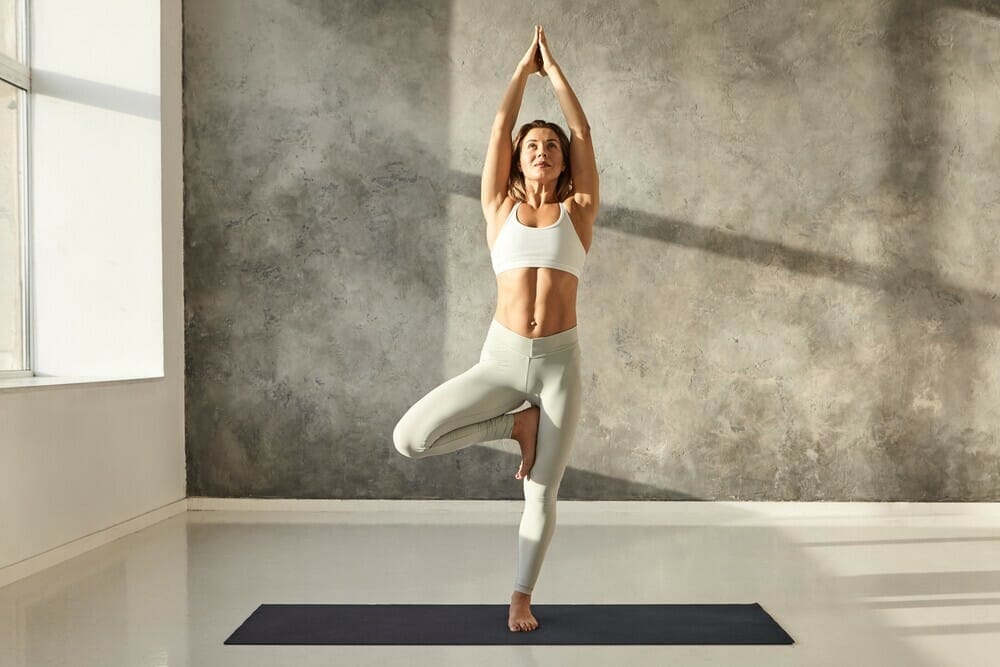
Final Thoughts…
These yoga poses are a great way to incorporate flexibility training into your weekly or daily routine to help prevent or lessen joint pain and injuries. It’s also a great way to improve your athletic performance and overall health if done consistently.
Regardless of your age, these poses can be included in a program for at-home exercise, allowing the individual to achieve the physical results they desire.
And if you get bored with the same old routine, there are plenty of yoga DVDs you can get on Amazon that will keep things exciting and challenging.
I hope you enjoyed reading this article and that you found the information helpful.
